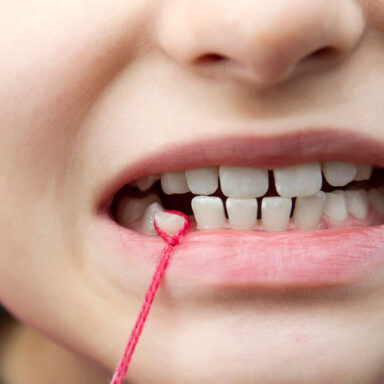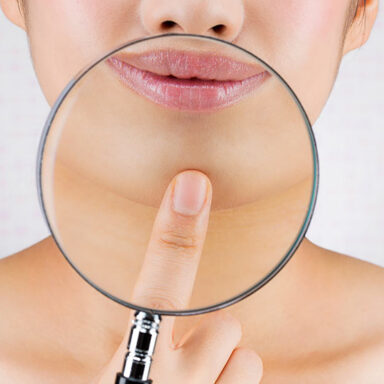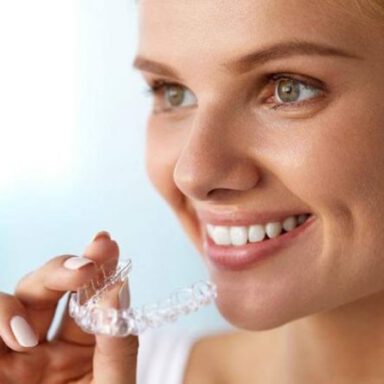Guidebook
Caries due to fixed braces? How to keep your teeth healthy during treatment with braces
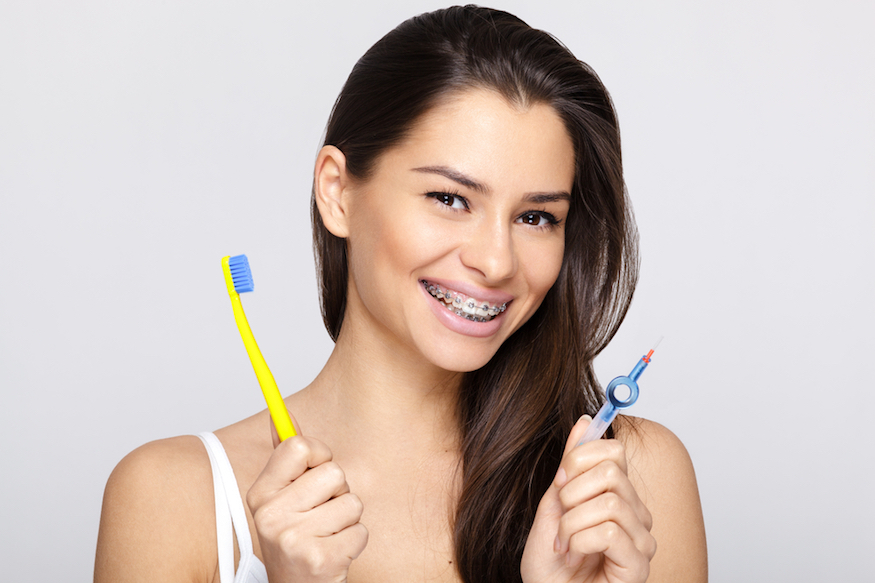
What good are fixed braces if the teeth are irreversibly damaged at the end of orthodontic treatment? Nothing at all! This is why we attach such great importance to caries prevention at our specialist orthodontic practice in Munich – Unterföhring. The good news is: stains on the teeth after braces removal and caries in connection with fixed braces are absolutely avoidable problems. Find out everything you need to know about tooth decay and decalcification in connection with orthodontics in this article.

Author
Dr. Fabian von Rom
Date
Estimated reading time
approx. 7 min
Caries due to fixed braces
Contents
What is tooth decay?
To understand how to minimize the risk of caries with fixed braces, it is important to know how caries develops in the first place.
In common parlance, a caries is a hole in the tooth. The condition for the development of caries is the formation of a so-called plaque. This is a biofilm that adheres firmly to the tooth surface, also known as dental plaque. This consists of saliva components, food residues and bacteria. We all have a large number of bacteria in our mouths. Some of them metabolize the carbohydrates in our food into lactic acid. The resulting acid in turn dissolves the tooth substance. The result is first a decalcification (white spot) with further progression a cavity develops, the caries.
Why do some patients have stains or edges of the brackets on their teeth after removing their fixed braces?
Impressions of brackets on the teeth are not a problem of the brackets themselves, but rather the result of inadequate oral hygiene during treatment. These are decalcifications that occur when cariogenic plaque is present over a long period of time. The development of such decalcifications must be prevented at all costs. With the right measures and thorough dental care, such unwanted tooth damage can be reliably avoided.
Thorough brushing prevents tooth decay with fixed braces
Regardless of the presence of braces, plaque needs about 24 hours to form in such a way that it can cause damage. The aim must therefore always be to remove plaque before dangerous, cariogenic plaque has formed. Dental plaque cannot be rinsed off and must be mechanically destroyed and removed using the bristles of a toothbrush. This basic rule of caries prophylaxis applies regardless of whether braces are in the mouth or not. The main difference is that there are considerably more small corners and niches when braces are present. Thoroughly cleaning all niches requires a little more effort and time with braces than without. Excellent oral hygiene is therefore the basic prerequisite for the use of fixed braces.
Experience has shown that the areas between the brackets and gums and the areas under the arch are most often forgotten when brushing teeth with brackets.
To get a better feel for where plaque is, the plaque can be made visible by staining. Appropriate staining agents are available from drugstores.
If you always remove all plaque thoroughly, you do not have to worry about the development of carious lesions in connection with fixed braces.
Flouride makes the tooth substance more resistant
Irrespective of wearing fixed braces, the resistance of the tooth enamel to caries and decalcification is increased by the local application of fluoride. We therefore recommend the use of toothpastes containing fluoride. The use of highly concentrated fluoride gels can further enhance this effect.
Special toothbrushes make brushing teeth with fixed braces easier
If you have fixed braces, some areas are difficult for the brush head of a normal toothbrush to reach. In this case, the additional use of so-called interdental brushes is recommended. These are special brushes with small brush heads whose bristles can easily reach all niches.
Most manufacturers offer special attachments for electric toothbrushes that make brushing your teeth with fixed braces easier.
Reducing the risk of tooth decay by choosing the right braces
Scientific studies have shown that decalcification occurs about 10 times less frequently when using fully customized internal braces compared to conventional brackets. If decalcification occurred on the inside at all, it was significantly less severe. This observation is based on the mechanical self-cleaning function of the tongue. In addition, the large salivary glands are located on the inside and the inner tooth surfaces are therefore better rinsed with saliva.
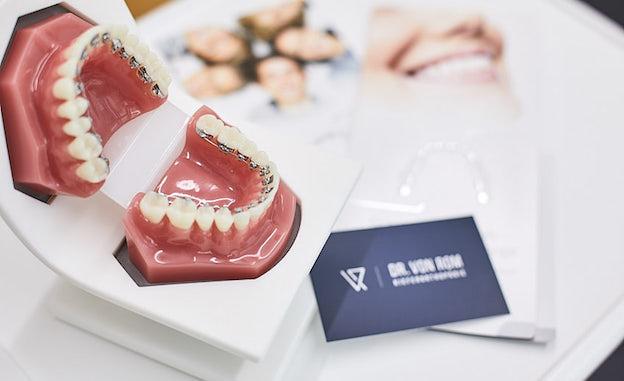
There are also differences between conventional brackets on the outside in terms of hygiene and therefore the risk of caries. So-called self-ligating brackets with a precision-engineered and polished locking mechanism have fewer niches and are easier to keep clean than brackets where the archwire is attached with a rubber ring.
In some cases, aligners are a sensible alternative to fixed braces. Aligners are transparent splints that are used to move the teeth. From the point of view of caries prevention, the great advantage of aligners is their removability. This means there are no obstacles when brushing teeth.
Sealing and cleaning to prevent caries and decalcification with fixed braces
In addition to thorough oral hygiene at home, sealing the tooth surfaces on which the brackets sit can help to further reduce the risk of tooth decay and decalcification. Sealing around the brackets is a transparent sealing varnish that offers the tooth surfaces additional protection against caries.
When the archwire is removed at regular intervals in the orthodontic practice as part of an archwire change, this is the moment when you have completely unobstructed access to the interdental spaces. In our orthodontic practice in Munich – Unterföhring, we like to use this situation to thoroughly clean the interdental spaces, which are otherwise more difficult to access.
Summary
- Caries only develops if cariogenic plaque is allowed to form. This is independent of the presence of braces and can be avoided through good oral hygiene.
- Brushing your teeth with fixed braces is somewhat more difficult. Therefore, particularly thorough cleaning is necessary.
- The risk of caries can be further reduced by the choice of braces and additional prophylactic measures such as sealing the area around the brackets, using fluoride or polishing the space between the teeth.
You may also be interested in our article on the topic:
KIG – What do the statutory health insurance funds pay?
Your expert for orthodontics
Dr. Fabian von Rom
In the specialist practice for orthodontics, Dr. med, dent. Fabian von Rom uses his extensive expertise and many years of experience to offer patients the best possible care. The practice offers the entire spectrum of modern orthodontics and specializes in innovative and advanced treatment methods. In addition to traditional procedures, the focus is on treatment with invisible braces for teenagers and adults – one of the most modern and discreet solutions in orthodontics. Dr. med. dent. Fabian von Rom attaches great importance to ensuring that medical precision goes hand in hand with a high level of patient satisfaction. By equipping the practice exclusively with individual treatment rooms, individual and professional care at the highest level is guaranteed.

Further topics
In our guide you will find lots more information on current, relevant and interesting topics relating to orthodontics. We hope you enjoy reading it!

